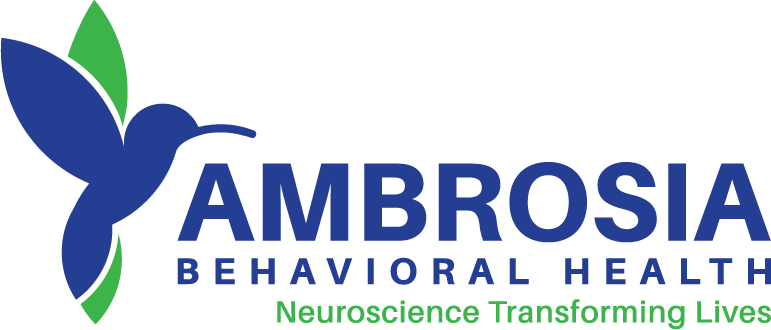Like any substance, Xanax carries the risk of withdrawal symptoms — even when taken as prescribed. While the risk of dependency is greater when you misuse Xanax or take doses higher than prescribed, you might experience different signs and symptoms of Xanax withdrawal if you suddenly stop taking Xanax. If you are concerned about your risk of Xanax dependency, talk to your doctor about safely stopping your prescription.
Why Is Xanax Addictive?
Xanax belongs to a class of drugs known as benzodiazepines, which are prescribed to treat anxiety, seizures, and muscle spasms. Some brand name benzodiazepines include Xanax, Klonopin, Ativan, Restoril, and Valium. Street names for benzodiazepines include “downers” and “benzos.”
Xanax and other benzodiazepines slow the central nervous system to brain activity and lessen anxiety. Xanax works similarly to other substances, like opioids and alcohol, and causes you to feel relaxed and euphoric. When you misuse or abuse your medication, you might become addicted to these euphoric feelings.
According to the Drug Enforcement Agency (DEA), “Abuse is frequently associated with adolescents and young adults who take the drug orally or crush it up and snort it to get high. Abuse is particularly high among heroin and cocaine users. Additionally, opioid users often abuse benzodiazepines to enhance euphoria.”
Even if you take your Xanax as prescribed, you might become dependent upon the substance to function normally. Physical dependency can lead to an addiction, especially if you begin using more Xanax to achieve the same effects. If you have an addiction or a dependence on Xanax, here are some signs and symptoms of Xanax withdrawal you will experience.
Signs and Symptoms of Xanax Withdrawal
Xanax (or the generic drug “Alprazolam”) can cause withdrawal symptoms if you stop taking the medication suddenly. According to MedlinePlus, some withdrawal symptoms “may last for several weeks to more than 12 months.” However, since Xanax is a fast-acting medication, you will most likely be able to detox within a few weeks.
Withdrawal symptoms of Xanax include:
- Unusual movements, like shaking uncontrollably
- Tinnitus (a ringing sound in your ears)
- Memory issues and difficulty concentrating
- Sleeping problems
- Muscle twitching
- Prickling sensations in your hands, arm, feet, or legs
- Depression and anxiety
- Seizures
- Losing touch with reality
- Visual and auditory hallucinations
- Feeling overly excited
- Thoughts of self-harm or suicidal ideation
If you have these symptoms after stopping Xanax, you might need medical attention to keep your symptoms from worsening. Never stop taking your prescription without first consulting your prescribing physician. Your doctor can help you with a process called “titration,” where you take less and less Xanax to get off your medication gradually.
If you misuse or abuse Xanax to self-medicate for symptoms like anxiety or other mental health concerns, you can get treatment in medical detox facility to rid your body of Xanax safely. You might also want to consider inpatient rehab to address the underlying issues at the root of your Xanax abuse to learn healthy ways of coping with stress and anxiety.
Rebound Symptoms of Xanax Withdrawal
In addition, without Xanax, you might feel an increase in the symptoms that Xanax was meant to treat. Without Xanax in your system, your symptoms might come back when you suddenly stop taking the medication. These are known as “rebound” symptoms, as you experience the symptoms that the Xanax was helping to treat.
Therefore, if you take Xanax for anxiety, you might experience a resurgence of anxiety, which might feel worse than before you began treatment. You might start to have seizures again when you stop taking Xanax or have muscle spasms if you initially took Xanax to treat these issues.
These rebound symptoms can last a long time, especially if you do not address these underlying issues in another way. For anxiety, Xanax and other benzodiazepines might be intended as only a short-term or an as-needed solution for sudden and intense episodes. For example, you might be prescribed Xanax for a sudden panic attack or to keep you from getting overly anxious while you learn ways to deal with stress.
Minimizing the Risk of Xanax Rebound Symptoms
You can minimize the risk of rebound symptoms by seeking alternative treatments after you detox from Xanax. You might want to consider mental health treatment in the form of individual or group therapy. After detoxing from Xanax, you can work with a facility to find the best treatment plan to prevent you from relapsing after dealing with the initial withdrawal symptoms.
In addition, you can try alternative forms of treating seizures and muscle spasms after your detox. Even if you do not have an underlying mental health issue, Xanax dependency and addiction are best treated at a medical detox facility that can keep you safe during the initial withdrawal period.
Get Help With Signs and Symptoms Of Xanax Withdrawal In South Florida
Detoxification from Xanax dependency and addiction is an essential step to finding alternative ways of treating your symptoms. Medically-assisted detox can help you safely deal with withdrawal symptoms from Xanax and other benzodiazepines. Ambrosia Treatment Center of West Palm Beach is here to help residents of South Florida with detox and long-term rehab for addiction. Your life is waiting; we’ll help you get there.




